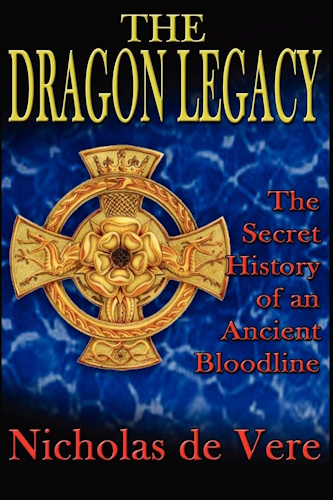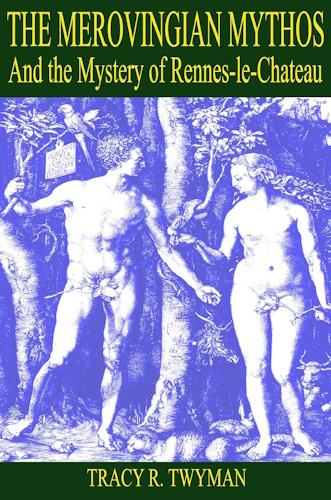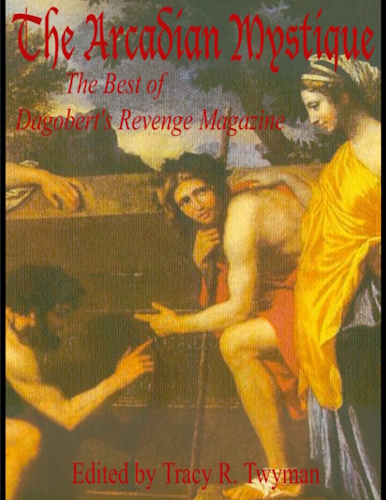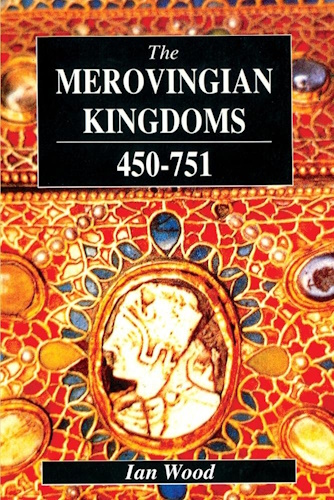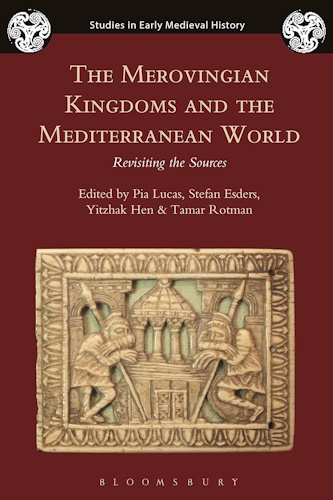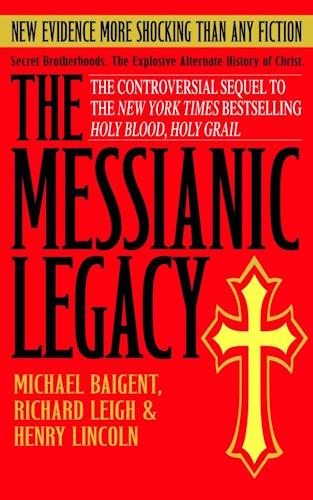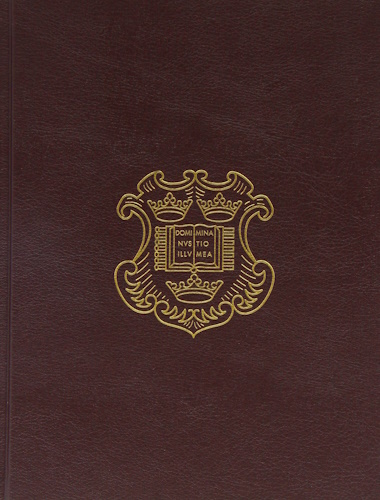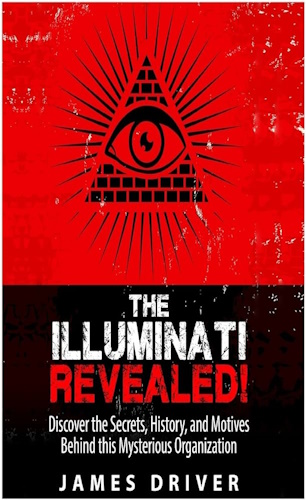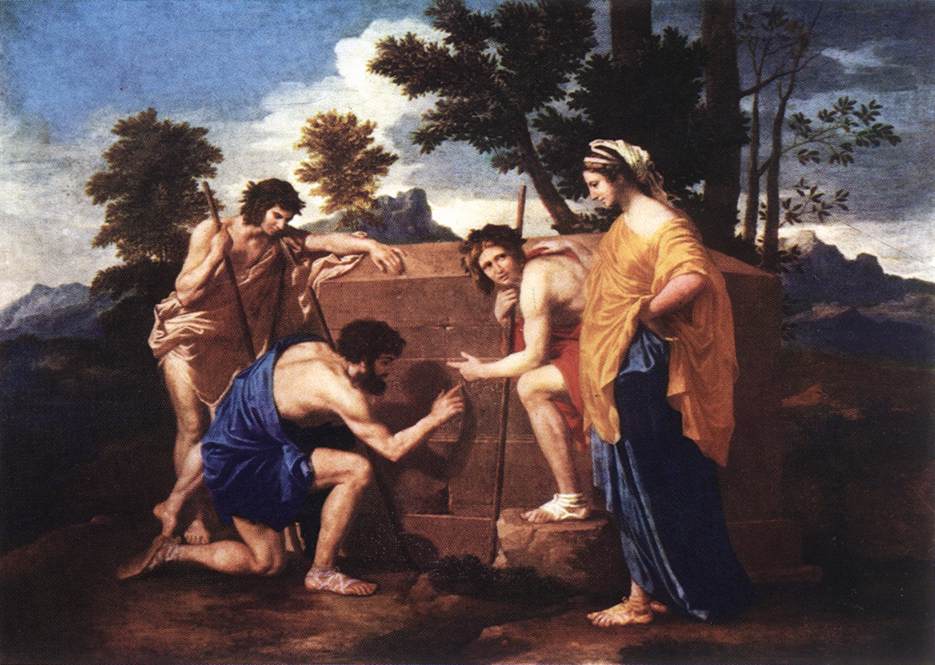![]()
The Merovingian Mythos,
and its Roots in
the Ancient Kingdom of Atlantis
by
Tracy R. Twyman
Recovered from: Wayback Machine
![]()
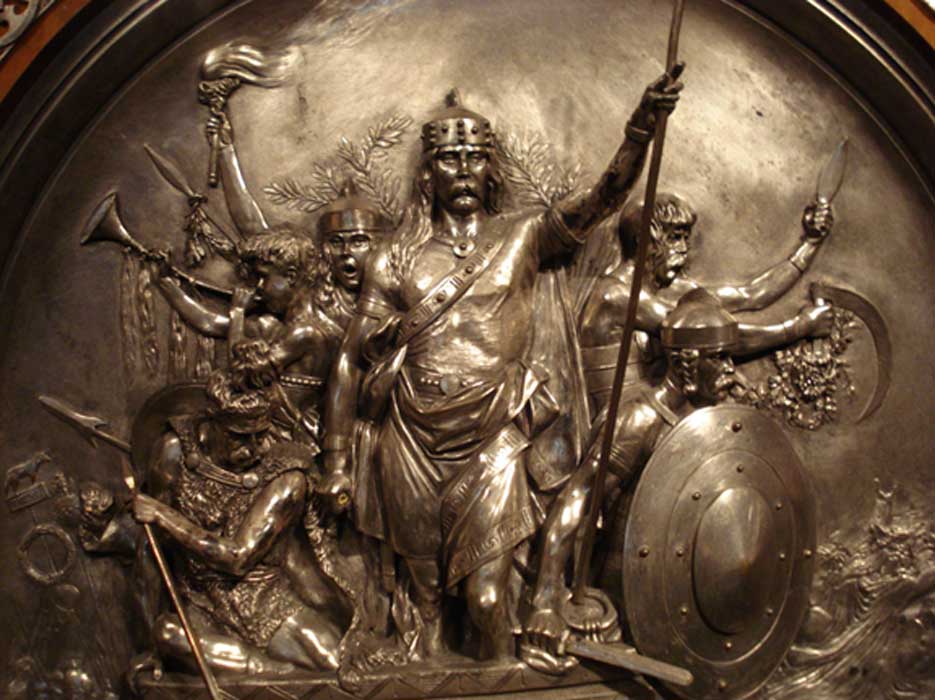
The Frankish King Dagobert II, and the Merovingian dynasty from which he came, have been romantically mythologized in the annals of both local legend and modern mystical pseudo-history, but few have understood the true meaning and origins of their alluring mystery. The mystique that surrounds them includes attributions of saintliness, magical powers (derived from their long hair), and even divine origin, because of their supposed descent from the one and only Jesus Christ. However, the importance of the divine ancestry of the Merovingians, and the antiquity from whence it comes, has never to this author's knowledge been fully explored by any writer or historian. However, I have uncovered mountains of evidence which indicates that the origins of the Merovingian race, and the mystery that surrounds them, lies ultimately with a race of beings, "Nephilim" or fallen angels, who created mankind as we know it today. It also originated with a civilization, far more ancient than recorded history, from which came all of the major arts and sciences that are basic to civilizations everywhere. As I intend to show, all of the myths and symbolism that are associated with this dynasty can, in fact, be traced back to this earlier civilization. It is known, in some cultures, as Atlantis, although there are many names for it, and it is the birthplace of agriculture, astronomy, mathematics, metallurgy, navigation, architecture, language, writing, and religion. It was also the source of the first government on Earth - monarchy. And the first kings on Earth were the gods.
Their race was known by various names. In Assyria, the Annodoti. In Sumeria, the Annunaki. In Druidic lore, the Tuatha de Danaan. In Judeo-Christian scriptures, they are called the Nephilim, "the Sons of God," or the Watchers. They are described as having attachments such as wings, horns, and even fish scales, but from the depictions it is clear that these are costumes worn for their symbolic value, for these symbols indicated divine power and royal blood. The gods themselves had their own monarchy, with laws of succession similar to our own, and they built a global empire upon the Earth, with great cities, temples, monuments, and mighty nations established on several continents. Man was separate from the gods, like a domesticated animal, and there was a great cultural taboo amongst the gods against sharing any of their sacred information with humanity, even things such as writing and mathematics. These gods ruled directly over Egypt, Mesopotamia, and the Indus Valley, and their rule is recorded in the histories of all three civilizations.
This global monarchy was the crowning glory of the ages, and the period of their rule came to be called "the Golden Age," or as the Egyptians called it, "the First Time," when the gods watched over man directly, like a shepherd does his flock. In fact, they were often called "the Shepherd Kings." One of the symbols of this world monarchy was an eye hovering over a throne, and this eye now adorns our American dollar bill, presented as the missing capstone of the Great Pyramid of Giza, underneath which are written the words "New World Order." Clearly this New World Order is the global monarchy that or Founding Fathers (not a Democrat among them) intended for this nation to participate in all along, symbolized by a pyramid as a representation of the ideal and perfectly ordered authoritarian empire. During the Golden Age of the gods, a new king's ascendance to the global throne would be celebrated by the sacrifice of a horse, an animal sacred to Poseidon, one of the Atlantean god-kings and Lord of the Seas.1 In fact there is an amusing story about how King Sargon's rebellious son Sagara tried to prevent his father's assumption to the world throne from being solidified by stealing his sacrificial horse. The horse was not recovered until years later, and Sagara, along with the "sons of Sagara," i.e., those members of his family who had assisted him, were forced to dig their own mass grave. This grave was oddly called "the Ocean."
It was a rebellion such as this that led to the downfall of the entire glorious empire. At some point, it is told, some of the gods broke rank. This is again recorded in just about every culture on Earth that has a written history or oral tradition. Some of the gods, finding human females most appealing, intermarried with them, breaking a major taboo within their own culture, and creating a race of human/god hybrids. Some of these offspring are described as taking the form of giants, dragons, and sea monsters, while others are said to have borne a normal human countenance, with the exception of their shimmering white skin and their extremely long life spans. This is the bloodline that brought us Noah, Abraham, Isaac, Jacob, King David, Jesus Christ, and many others - in other words, the "Grail bloodline." Legend has it that these beings taught mankind their secrets, including the above-mentioned arts of civilization, as well as a secret spiritual doctrine that only certain elect humans (their blood descendants) would be allowed to possess. They created ritualistic mystery schools and secret societies to pass this doctrine down through the generations.
However, these actions (the interbreeding with and sharing of secrets with humans) incurred the wrath of the Most High God, and a number of other gods who were disgusted by this interracial breeding. This sparked the massive and devastating battle of the gods that has come down to us in the legend of the "war in Heaven." Then, in order to cleanse the Earth's surface of the curse of humanity, they covered it with a flood. Interestingly, this flood is mentioned in the legends of almost every ancient culture on Earth, and the cause is always the same. Often the waters are described as having come from inside the Earth. "The Fountains of the deep were opened," it is said. "Suddenly enormous volumes of water issued from the Earth." Water was "projected from the mountain like a water spout." The Earth began to rumble, and Atlantis, fair nation of the gods, sunk beneath the salty green waves. As we shall see, this is analogous to part of the "war in Heaven" story when the "rebellious" angels or gods were punished by being cast down "into the bowels of the Earth" - a very significant location.
To be certain, some of the Atlanteans managed to survive, and many books have been written about the Atlantean origin of the Egyptian, Sumerian, Indo-Aryan, and native South American civilizations (bringing into question the validity of the term "Native American"). Little, however, has been written about those who escaped into Western Europe, except for a passing reference in Ignatius Donnelly's Atlantis: The Antediluvian World, in which we writes:
"The Gauls [meaning the French] possessed traditions upon the subject of Atlantis which were collected by the Roman historian Timagenes, who lived in the first century before Christ. He represents that three distinct people dwelt in Gaul: 1. The indigenous population, which I suppose to be Mongoloids, who had long dwelt in Europe; 2. the invaders from a distant land, which I understand to be Atlantis; 3. The Aryan Gaul."

That the Merovingian bloodline came from elsewhere is clear because of the legend that surrounds their founder, King Meroveus, who is said to have been the spawn of a "Quinotaur" (a sea monster), who raped his mother when she went out to swim in the ocean. Now it becomes obvious why he is called "Meroveus," because in French, the word "mer" means sea. And in some traditions, Atlantis was called Meru, or Maru.2 For these gods, navigation above all was important to them, for it was their sea power that maintained their military might and their successful mercantile trade.3 The Atlanteans were associated with the sea and were often depicted as mermen, or sea monsters, with scales, fins, and horns. They were variously associated with a number of important animals, whose symbolism they held sacred: horses, bulls, goats, rams, lions, fish, serpents, dragons, even cats and dogs. All of these things relate back to the sea imagery with which these gods were associated.
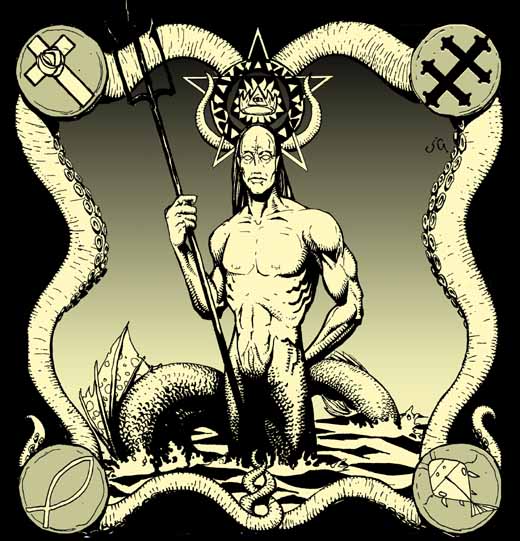
Now lets go back to the Quinotaur, which some have named as being synonymous with Poseidon, the Greek god of the sea and, according to Plato, one of the famous kings of Atlantis. Others have seen it as being emblematic of the fish symbol that Christ is associated with, thus indicating that he was in fact the origin of the Merovingian bloodline. However, the roots of this Quinotaur myth are far more ancient. The word itself can be broken down etymologically to reveal its meaning. The last syllable, "taur," means "bull." The first syllable "Quin," or "Kin," comes from the same root as "king," as well as the Biblical name of Cain, whom many have named as the primordial father of the Grail family.4 The idea of the "King of the World" taking the form of a sea-bull was a recurring them in many ancient cultures, most notably in ancient Mesopotamia. In fact it originated with that dynasty of kings who reigned over the antediluvian world and who were all associated with the sea, as well as this divine animal imagery. These kings included Sargon, Menes, and Narmar. Their historical reality morphed into the legends we have in many cultures of gods said to have come out of the sea at various times and to teach mankind the basic arts of civilization. They were known by various names, such as Enki, Dagon, Oannes, or Marduk (Merodach). They were depicted as half-man and half-fish, half-goat and half-fish, or half-bull and half-fish, but as I have said, in many of these depictions it is clear that this affect was achieved merely by the wearing of costumes, and that these god-kings were using this archetypal imagery to deify themselves in the minds of their subjects.
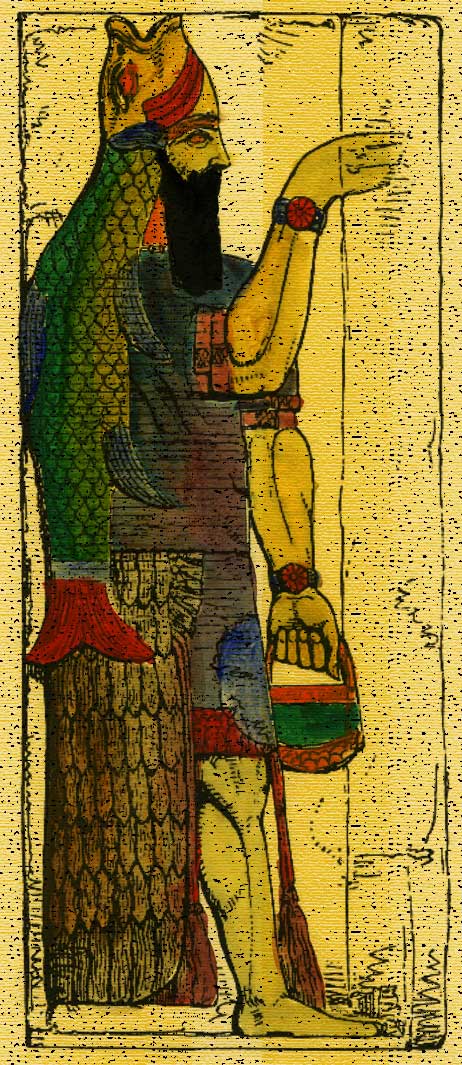
Dagon was depicted with a fish on his head, the lips protruding upward, making what were referred to as "horns." This may be the origin for the custom (common in the ancient world) of affixing horns to the crown of a king. It has also been historically acknowledged as the origin of the miter worn by the Catholic Pope.5 The Christian Church has always been associated with fish. Christ himself took on that imagery, as did John the Baptist, and the early Christians used the fish sign of the "Ichthys" to designate themselves. From the name "Oannes" we get the words "Uranus" and "Ouranos," but also supposedly "Jonah," "Janus," and "John." Perhaps we finally now understand why the Grand Masters of the Priory of Sion assume the symbolic name of "John" upon taking office.
The syllable "dag" merely means "fish," which makes it interesting to note that the Dogon tribe of Africa, who have long baffled astronomers with their advanced knowledge of the faraway star-system from which they say their gods came, claim that these gods were "fish-men." We may wonder if the words "dag" and "dog" are not etymologically related, especially since the star from whence these fish-men supposedly came is named Sirius, "the Dog Star." From Dagon comes our word "dragon," as well as the biblical figure of Leviathan, "the Lord of the Deep," a title also applied to Dagon. In fact, many of these Atlantean god-kings received the titles "the Lord of the Waters," "The Lord of the Deep," or "the Lord of the Abyss," which appear to have been passed down from father to son, along with the throne of the global kingdom. These kings were specifically associated with the Flood of Noah, which, as I have mentioned, destroyed their global kingdom, and was somehow linked to their disastrous breeding experiment with the human race that lead to the "Grail bloodline." For this they were consigned to the "Abyss" or the underworld, which is why these gods were known as the lords of both.
In addition, Enki was known as the "Lord of the Earth," and it is because of this "amphibious" nature of their progenitor, who reigned over both land and sea, that the Merovingians are associated with frogs. But this "Lord of the Earth" title is significant, for this is a title also given to Satan. It has been acknowledged elsewhere that Enki, as the "fish-goat man," is the prototype for the Zodiac sign of Capricorn, which is itself recognized as the prototype for the modern conception of Satan or Lucifer. Furthermore, a well-known and pivotal episode in Enki's career was his fight against his brother Enlil over the succession of the global throne. Enki eventually slew Enlil, something that is recorded in the Egyptian myth of Set murdering Osiris, and perhaps in the Biblical story of Cain murdering Abel. The connection between Enki and Enlil and Cain and Abel can be further proven by the fact that Enki and Enlil were the son of Anu (in some Sumerian legends, the first god-king on Earth), whereas Cain and Abel were the sons of the first man, called "Adamu" in Sumerian legends. "Adamu" and "Anu" appear to be etymologically related.
This family feud erupted into a long and overdrawn battle between the gods, who were split into two factions over the issue. These appear to be the same two factions who were at odds over the mating of gods and men to create the Grail bloodline. Those who supported Enki/Satan and Cain were clearly the ones who were inclined to breed with mankind, perhaps in an attempt to create a hybrid race that could assist them in retaining the throne for Cain. But they were overpowered. After they lost the "war in Heaven," they were cast into the Abyss (according to legend, now the realm of Satan), and the Earth was flooded so as to rid it of their offspring.
Yet according to the legends, those gods who had created the hybrid race contacted one of their most favored descendants (called Uta-Napishtim in the Sumerian legends, or Noah in the Jewish), helping him to rescue himself and his family, preserving the seed of hybrid humanity.6 We see remnants of this in the Vedic legends of the Flood, in which the Noah figure, here called "Manu," is warned about the Flood by a horned fish (who turns out to be the Hindu god Vishnu in disguise). The fish tells Manu to build a ship, and then tie its tip to his horn. He then proceeds to tow Manu's ship to safety upon a high mountain. So clearly Vishnu is connected to Enki, Dagon, and Oannes, and clearly he is the same one who saved Noah from the Flood. Yet this very deed became attributed, in the Old Testament, to the same god, Jehovah, who had purportedly caused the Flood to begin with. In fact the word Jehovah, or "Jah" is said to have evolved from the name of another Sumerian sea god-king, Ea, "the Lord of the Flood." Likewise, Leviathan is responsible, according to some references, for "vomiting out the waters of the Flood." This occurs at the Apocalypse in the Revelation of St. John the Divine as well. Leviathan, like many of these sea gods, was the Lord of the Abyss, and these waters were believed to be holding the Earth up from underneath, in the regions of Hell. Yet "Leviathan" is almost surely etymologically related to the Jewish name "Levi," and therefore to the "tribe of Levi," the priestly caste of the Jews that formed part of Christ's lineage.
This dual current, being associated with both the heavenly and the infernal, with both Jesus and Jehovah, as well as Satan and Lucifer, is something that is consistently found throughout the history of the Merovingian dynasty, as well as all of the other Grail families, and the entire Grail story itself. It is at the heart of the secret spiritual doctrine symbolized by the Grail. This symbolism hits you immediately when you walk through the door of the church at Rennes-le-Chateau, France, and see those opposing statues of the demon Asmodeus and Jesus Christ staring at the same black and white chequered floor, which itself symbolizes the balance of good and evil. This principle is further elucidated by the words placed over the doorway, "This place is terrible, but it is the House of God and the Gateway to Heaven." This phrase turns up in two significant places. One is in the Bible, when Jacob has his vision of the ladder leading to Heaven, with angels ascending and descending. The other is in The Book of Enoch, when Enoch is taken for a tour of Hell. The existence of this phrase at the entrance to the church, coupled with the images that meet you immediately therein, render the meaning obvious. For Berenger Sauniere, who arranged these strange decorations, this Church represented some kind of metaphysical gateway between Heaven and Hell.
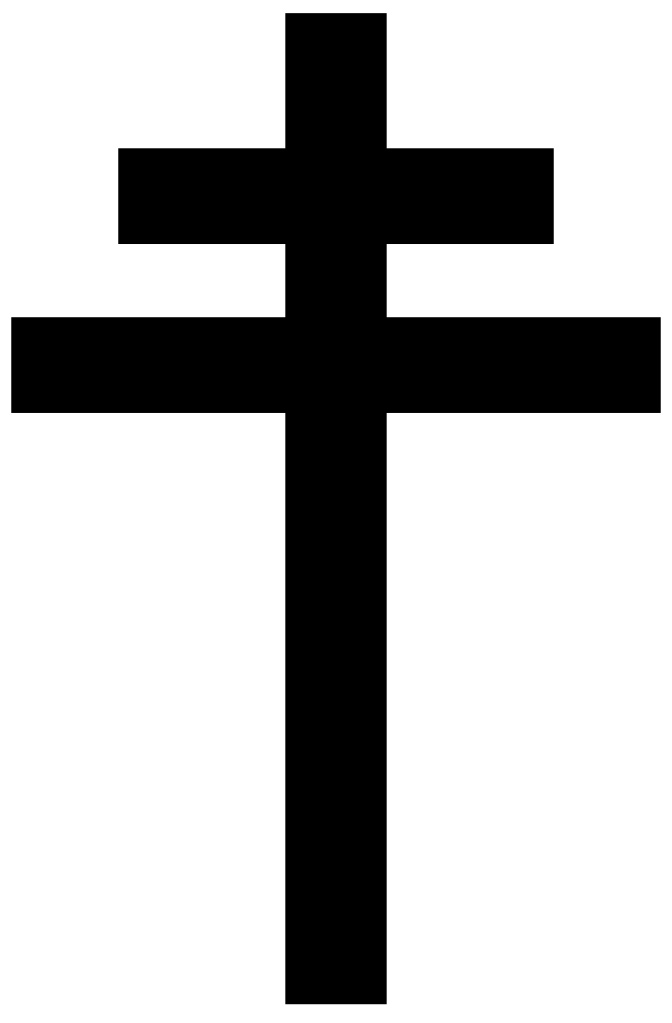
For this reason, the double-barred Cross of Lorraine, symbolizing this duality, has come to be associated with the Merovingians. In a now famous poem by Charles Peguy, is it stated:
"The arms of Jesus are the Cross of Lorraine,
Both the blood in the artery and the blood in the vein,
Both the source of grace and the clear fountaine;
The arms of Satan are the Cross of Lorraine,
And the same artery and the same vein,
And the same blood and the troubled fountaine."
The reference to Satan and Jesus sharing the same blood is very important. A tradition exists, one which finds support among The Book of Enoch and many others, that Jesus and Satan are brothers, both sons of the Most High God, and they both sat next to his throne in Heaven, on the right and left sides, respectively, prior to Satan's rebellion and the War in Heaven. This may be just another version of the persistent and primordial "Cain and Abel" story. It makes sense that Satan should be a direct son of God, since he is described as God's "most beloved angel" and "the brightest star in Heaven."7
However, this symbol is far older than the modern conceptions of Christ and Satan, or Lucifer. This symbol can be traced back to the hieroglyphs of ancient Sumer, where it was pronounced "Khat," "Kad," and sometimes even "Kod." This was another title for the kings who were known as gods of the sea, and the word "Khatti" became associated with this entire race. Their region's capitol was called "Amarru" - "the Land to the West" (like Meru, the alternate term for Atlantis). This land was symbolized by a lion, which may explain the origin of the word "cat," as well as why the lion is now a symbol of royalty. Furthermore, the word "cad" or "cod" has also become associated with fish and sea creatures in the Indo-European language system.8 I would argue that this was at the root of the word "Cathari" (the heretics associated with the Holy Grail who occupied the Languedoc region of France that the Merovingians ruled over), as well as Adam Kadmon, the Primordial Man of alchemy, and "Caduceus," the winged staff of Mercury. It is also the root for the name of the Mesopotamian kingdom of "Akkadia," which itself has morphed into "Arcadia," the Greek concept of Paradise. This further morphs into "acacia," the traditional Masonic "sprig of hope" and symbol of resurrection after death.
Perhaps this sheds further light on the phrase "Et in Arcadia Ego," which pops up more than once in association with the mystery of Rennes-le-Chateau and the Merovingians. This phrase was illustrated by Nicolas Poussin with the scene of a tomb, a human skull, and three shepherds. The tomb and skull clearly represent death, while the Sprig of Acacia implied by the word "Arcadia" translates to "resurrection from death." The shepherds, furthermore, represent the divine kingship of the Atlantean gods and the Grail bloodline, for these god-monarchs were also known as the "Shepherd Kings" (a title, notably, taken up by Jesus as well). This indicates that it is the global monarchy of these Atlantean gods that shall rise again from the tomb, perhaps through the Merovingian bloodline.
This archetype of the fallen king who shall one day return, or the kingdom that disappears, only to rise again in a new, golden age, is a very common one, and one that I have shown in another article to be integral to the Grail legend. It was also one used quite effectively by the last of the Merovingian kings who effectively held the throne of the Austrasian Empire - this magazine's mascot, Dagobert II. Dagobert's entire life, as historically recorded, is mythological and archetypal. His name betrays the divine origins of his bloodline. "Dagobert" comes, of course, from Dagon. Now the word "bert," as the author L.A. Waddell has shown, has its roots in the word "bara," or "para," or Anglicized, "pharaoh," a "priest-king of the temple (or house)." So Dagobert's name literally means "Priest-King of the House of Dagon." Interestingly, a rarely-found but nonetheless authentic variation on Dagobert's name was "Dragobert," emphasizing his lineage from the beast of the deep waters, the dragon Leviathan.
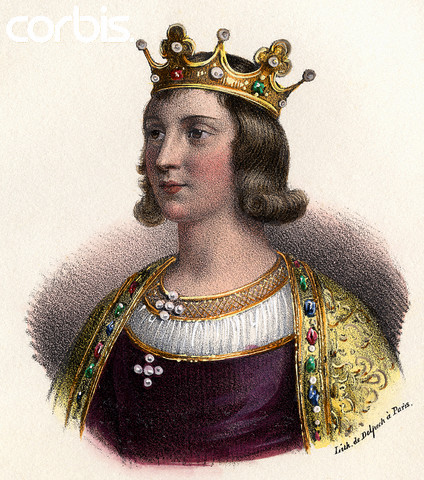
Dagobert made use of the myth of the returning king early on in life. His father had been assassinated when he was five years old, and young Dagobert was kidnapped by then Palace Mayor Grimoald, who tried to put his own son on the throne. He was saved from death, but an elaborate ruse was laid out to make people think otherwise. Even his own mother believed he was dead, and allowed his father's assassins to take over, placing Grimoald's son on the throne. Dagobert was exiled to Ireland, where he lay in wait for the opportunity to reclaim his father's throne. This opportunity showed itself in the year 671, when he married Giselle de Razes, daughter of the count of Razes and niece of the king of the Visigoths, allying the Merovingian house with the Visigothic royal house. This had the potential for creating a united empire that would have covered most of what is now modern France. This marriage was celebrated at the Church of St. Madeleine in Rhedae, the same spot where Sauniere's Church of St. Madeleine at Rennes-le-Chateau now rests. There is an existing rumor that Dagobert found something there, a clue which lead him to a treasure buried in the nearby Montsegur, and this treasure financed what was about to come. This was the re-conquest of the Aquitaine and the throne of the Frankish kingdom. As Baigent, et. al write in Holy Blood, Holy Grail, "At once he set about asserting and consolidating his authority, taming the anarchy that prevailed throughout Austrasia and reestablishing order." The fallen king had risen from his ashes, born anew as Dagobert II, and had come to once more establish firm rule and equilibrium in his country. The similarities to the Parzival/Grail story don't even need to be repeated.
Sadly, Dagobert II would himself play the role of the fallen king just a few years later, in 679, and the circumstances were decidedly strange. You see, since the time of King Clovis I, the Merovingian kings had been under a pact with the Vatican, in which they had pledged their allegiance to the Mother Church in exchange for Papal backing of the their united empire of Austrasia. They would forever hold the title of "New Constantine," a title that would later morph into "Holy Roman Emperor." But that "allegiance" on the part of the Merovingians towards the Church began to wear thin after a while. Obviously, given their infernal and divine origin, their spiritual bent was slightly different from that of organized Christianity. In addition, as direct descendants of the historical Christ himself, they would have possessed access to the secret teachings of Christ, no doubt shockingly different from the ones promoted by the Church, and reflecting more of the "secret doctrine" of the rebellious gods that I have talked about in this article. Any public knowledge of this or the blood relationship between Christ and the Merovingians would have been disastrous for the Church. Christ would therefore be a man, with antecedents and descendants, instead of the "son of God, born of a virgin" concept promoted by the Church. Seeing in Dagobert a potential threat, the Roman church entered into a conspiracy with Palace Mayor Pepin the Fat.
On December 23, while on a hunting trip, Dagobert was lanced through the left eye by his own godson, supposedly on Pepin's orders. There are many aspects to this event that appear to be mythologically significant. For one thing, it took place in the "Forest of Woevres," long held sacred, and host to annual sacrificial bear hunts for the Goddess Diana. Indeed, the murder may have taken place on such a hunt. This was near the royal Merovingian residence at Stenay, a town that used to be called "Satanicum." We must also consider the date itself, which was almost precisely at the beginning of the astrological period of Capricorn. As I have mentioned, Capricorn is based on Enki, and is thus connected to the Quinotaur that spawned the Merovingian bloodline. It is also close to the Winter Solstice, the shortest day in the year, when the Sun was said to "die," mythologically, and turn black, descending into the underworld. This "black" period of the Sun is associated with the god Kronos or Saturn, another horned sea-god, ruler of the underworld, and king of Atlantis who figures repeatedly in this Grail/Rennes-le-Chateau mystery.9 Secondly, the murder is said to take place at midday, which, as I have mentioned in another article, is an extremely significant moment in time for mystery schools of the secret doctrine, like Freemasonry. The parchments found by Berenger Sauniere and the related poem, Le Serpent Rouge makes a special mention of it. This is when the Sun is highest in the sky. The fact that Dagobert's murder was committed by a family member is significant too. This is similar to the "Dolorous Stroke" that wounds the Fisher King in the Grail story, something which also took place at midday and was inflicted by the king's own brother. In this story, the brother who wounds the Fisher King is known as the "Dark Lord," and during the fight he is wounded in the left eye, precisely as Dagobert was wounded. The same thing happened to Horus in Egyptian mythology, fighting his uncle, Set. The "Left Eye of Horus" came to symbolize the hidden knowledge of the gods, just as the "left hand path" does today. Dagobert's death appears to follow the same patterns as many other fallen kings or murdered gods whose death must be avenged. It is meant to symbolize the concept of the lost or fallen kingdom the same way the Dolorous Stroke does in the Grail story.
Clearly, Dagobert's death meant the end for the Merovingian kingdom. All subsequent Merovingian kings were essentially powerless, and they were officially thought to have died out with Dagobert's grandson, Childeric III. 49 years later, Charles Martel's grandson, Charlemagne was anointed Holy Roman Emperor. But in 872, almost 200 years after his death, Dagobert was canonized as a Saint, and the date of his death, December 23, became "St. Dagobert's Day." Write Baigent, et. al.:
"The reason for Dagobert's canonization remains unclear. According to one source it was because his relics were believed to have preserved the vicinity of Stenay against Viking raids - though this explanation begs the question, for it is not clear why the relics should have possessed such powers is the first place. Ecclesiastical authorities seem embarrassingly ignorant on the matter. They admit that Dagobert, for some reason, became the object of a fully fledged cult… But they seem utterly at a loss as to why he should have been so exalted. It is possible, of course that the Church felt guilty about its role in the king's death."
Guilty, or afraid? For surely they knew that this "Priest-King of the House of Dagon," with his divine lineage, so beloved by his people that they worship him like a god 200 years later, would of course be avenged for his treacherous murder. Surely they knew, as most Dagobert's Revenge readers know, that the Merovingian bloodline didn't die out, surviving through his son Sigisbert, and continues to jockey for the throne of France to this very day through the actions of various royal bloodlines throughout Europe. Surely they knew that this kingdom would rise again, and that the lost king would return someday. The seeds of his return have already been planted. France is united into the political mass that Dagobert had envisioned it to be when he united Austrasia, and the "Holy Roman Empire," which the Merovingian kings were clearly attempting to form with the help of the Vatican, has now become a reality in the form of the European Union. During WWII and immediately afterwards, the Priory of Sion, that secret order dedicated to the Merovingian agenda, openly campaigned for a United States of Europe. They even proposed a flag, consisting of stars in a circle, which is identical to the flag used by the European Union today.10 Furthermore, the world empire of the Atlantean kings who spawned the Merovingians is more complete now than it has ever been since the gods left the earth during the Deluge. The United Nations, a feeble example, will surely give way at some point to a united world government strong enough and glorious enough to be called an empire. The fallen kingdom of the gods is clearly returning, and the new Golden Age is upon us. If this author's hunch is correct, this is, indeed, a glorious time to be alive.
Endnotes:
1. Recall that Merovingian King Clovis was buried with a severed horse's head.
2. It is also the name of the famous "world mountain" of Eastern tradition.
3. Note that "mer" is also the origin of the word "mercantile."
4. Cain's name has been said to be the origin of the word "king"
5. Now we understand why, in the post-mortem photo of Berenger Sauniere lying on his death bed, this small parish priest is seen next to a bishop's miter.
6. Uta-Napishtim contains the Sumerian and Egyptian word for fish, "pish," and perhaps we can see why some authors have claimed that the character of Noah is in fact based on Oannes, Dagon, or Enki as well.
7. The Book of Enoch refers to the Watchers, or Nephilim, as "stars," with various "watchtowers" in the houses of the Zodiac. Bear in mind that the ancients saw the sky above as a giant "sea," the waters of which were kept at bay by the "Firmament of Heaven" - that is, until the Flood.
8. At this writing, a large sea serpent 20 meters long has just been discovered off the coast of Canada named "Cadborosaurus Willsi," nicknamed "Caddy."
9. Kronos or Saturn is the inspiration for the figures of Capricorn and the Judeo-Christian Satan.
10. This flag was shown carried by a divine white horse, a symbol of Poseidon and world monarchy.

August 28, 1978 - July 9, 2019
About the Author
Tracy R. Twyman is an American non-fiction author, born on August 28, 1978 in Kansas City, Missouri. She writes about esoteric history. Her most well-known books include Clock Shavings, The Merovingian Mythos, Solomon's Treasure, and Money Grows on the Tree of Knowledge. Her latest is Baphomet: The Temple Mystery Unveiled, co-written with Alexander Rivera of The AeonEye.com. Before writing books, she made a name for herself as the Editor and Publisher of a highly unique magazine entitled Dagobert's Revenge, which was published from 1996 to 2003.
She has appeared on several radio shows, television shows, and film documentaries. Most notably, she has been interviewed on National Geographic's "Is It Real: Da Vinci's Code" (2006), "Jesse Ventura's Conspiracy Theory" (2012), and the documentary film Bloodline (2008). She has appeared repeatedly on Coast to Coast AM, and Ground Zero with Clyde Lewis (which she was the Executive Producer of for a period of time from 2014-2015), as well as many other programs.
James Leroy Wilson wrote:
Tracy was found hanged in her garage with her husband ruled out as a suspect. Her readers have no reason to suspect this was a suicide, unless she was driven to it under extreme duress.
But why suspect foul play? Specifics can be found elsewhere, but in brief, she had hinted strongly, publicly, that she believed the parties involved in Isaac Kappy’s death were the same ones who harassed her online and hacked her devices last year.
If there are child sex rings involving the rich and powerful, if it’s not just Jeffrey Epstein who was or is raping girls, then Twyman was a threat to them. They didn’t know how much she knew through fact-finding, and how much she could figure out.
For there are few if any occult and conspiracy researchers who knew as much as Twyman about the code words, the bodily gestures, and other symbolism behind public and private communication. And she’d been researching sex abuse for a long time.
It might seem like, because she was on the fringe, she wasn’t a threat. But I think she thought they knew what she knew, and knew pretty much everything about anyone.
![]()
![]()
Disclaimer:
Some material presented will contain links, quotes, ideologies, etc., the contents of which should be understood to first, in their whole, reflect the views or opinions of their editors, and second, are used in my personal research as "fair use" sources only, and not espousement one way or the other. Researching for 'truth' leads one all over the place...a piece here, a piece there. As a researcher, I hunt, gather and disassemble resources, trying to put all the pieces into a coherent and logical whole. I encourage you to do the same. And please remember, these pages are only my effort to collect all the pieces I can find and see if they properly fit into the 'reality aggregate'.
Personal Position:
I've come to realize that 'truth' boils down to what we 'believe' the facts we've gathered point to. We only 'know' what we've 'experienced' firsthand. Everything else - what we read, what we watch, what we hear - is what someone else's gathered facts point to and 'they' 'believe' is 'truth', so that 'truth' seems to change in direct proportion to newly gathered facts divided by applied plausibility. Though I believe there is 'truth', until someone representing the celestial realm visibly appears and presents the heavenly records of Facts And Lies In The Order They Happened, I can't know for sure exactly what "the whole truth' on any given subject is, and what applies to me applies to everyone. Until then I'll continue to ask, "what does The Urantia Book say on the subject?"
~Gail Bird Allen
![]()
![]()

